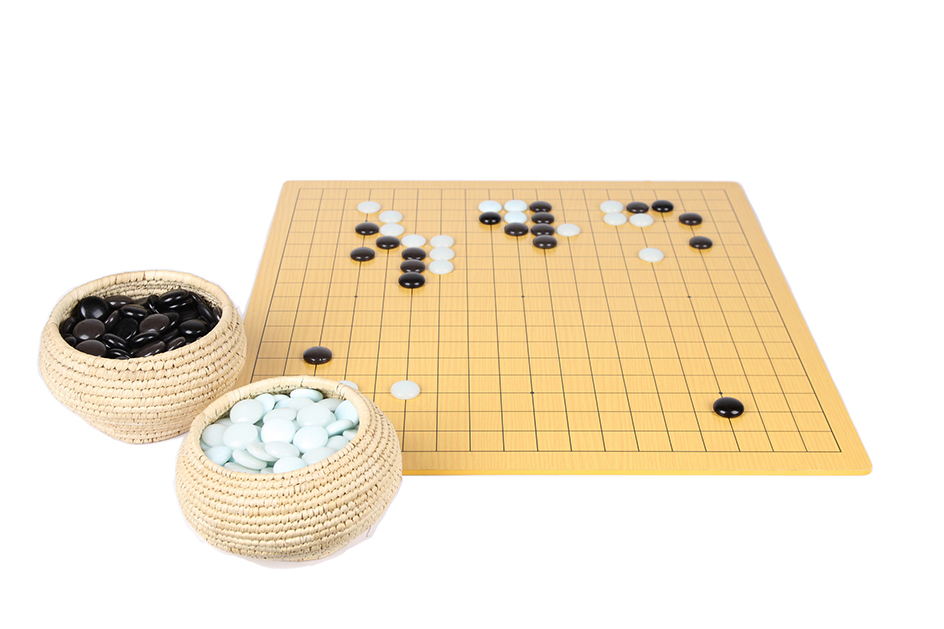Go is a two-person board game that is popular in Japan. It has been played in Asia for thousands of years. Go is played on a board marked with a grid—19 lines across and 19 lines down. These lines form 361 intersections, or points. The game is played with white and black pieces, called stones. There are 180 white and 181 black stones. Play begins with black.

Each player takes a color, and players alternate placing stones on the board, one stone per turn. The stones are placed on the points. Once a stone is placed it may not be moved, unless it is captured by the opponent and removed from the board. To capture, a player attempts to put his or her stones on the board so as to surround the other player’s stones. When a player’s stones are surrounded and have no open point, or liberty, that stone or group of stones is captured.
When a player has no opportunity to increase territory or protect territory or stones and no way to capture the opponent’s territory or stones, the player passes. When both players pass in sequence, the game ends. At the end of a game, scoring determines the winner. Players gain a point for each stone of their color left on the board and for empty points completely surrounded by stones of their color. The highest score wins.
Go was likely invented in China or India thousands of years ago. However, the history of the game is not clear. At some later time, Go was brought to Japan and Korea. It developed a strong tradition of play in these countries. The game was not known outside of Asia until the 1800’s. In the 2000’s, the game became popular on the Internet and has since spread throughout the world.
